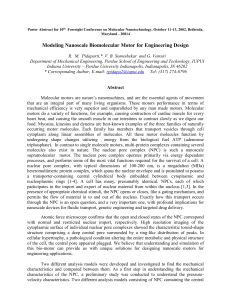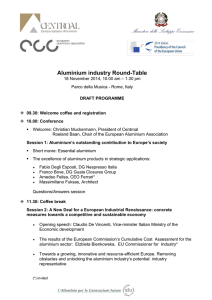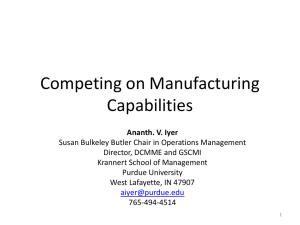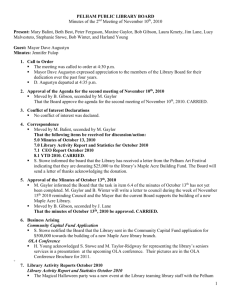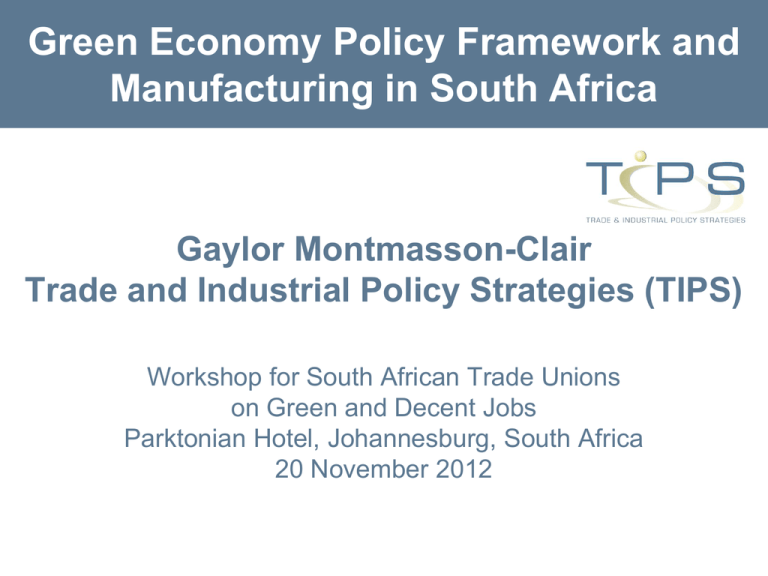
Green Economy Policy Framework and
Manufacturing in South Africa
Gaylor Montmasson-Clair
Trade and Industrial Policy Strategies (TIPS)
Workshop for South African Trade Unions
on Green and Decent Jobs
Parktonian Hotel, Johannesburg, South Africa
20 November 2012
Outline
Introduction
Green economy framework in South Africa
Policy mandate
Institutional structure
Legal and policy overview
Green economy and manufacturing in South
Africa
Potential employment
Main threats
Main opportunities
Conclusion
Introduction
South Africa remains faced with the triple developmental
challenge of unemployment, poverty and inequality
In addition, the country’s current economic growth model is
heavily resource and energy-intensive, aggravating pressures
on the environment and the threat of climate change
Includes manufacturing industries (12.6% of GDP, 12.7 of employment)
which are heavily represented in the EIUG
The transition to a green economy as a ground-breaking way
forward: South Africa is in a unique position to exploit the
emergence of a green economy in the world
Both constitutes a threat and a opportunity for manufacturing
Green economy framework in South
Africa: Policy mandate
Since 1994, South Africa has achieved far-reaching
political, economic and social changes, and has
shown an increasing commitment to sustainable
development:
Own national framework for a shift to a green economy
(starting with the 1996 Constitution)
Party to both the Kyoto Protocol and the UNFCCC
(+commitments under the Cancun Agreement)
Party to many international conventions and agreements on
biodiversity and pollution issues
Green economy framework in South
Africa: Institutional structure
South Africa’s institutional arrangements with
respect to the green economy reflect the
challenges faced internationally of complex
interconnections between a maze of institutions:
NSSD is the responsibility of the DEA but the NPC, a
department of sustainable development in all but
name, resides in the Presidency (it however has
advisory powers only)
EDD includes the green economy under its
formulation of a NGP, but only has direct control over
the two main state-run DFIs: the DBSA and the IDC
Green economy framework in South
Africa: Institutional structure (2)
Support for green industry falls under the dti, but the dti has to rely on other
departments to implement measures aimed at green industries:
NT: environmental fiscal reform
DEA: setting of environmental standards (e.g. for pollution or emissions)
DoE: issues relating to fossil fuels and renewable energy
DWA: issues relating to water
DST: technology policy and R&D
South Africa has institutionalised social dialogue, through NEDLAC: all
constituents have recognised the importance of, and are willing to participate
in, managing the transition to a green economy, but they defend different
priorities:
Business: potential cost and effort involved in complying with new
regulations and taxes
Trade unions: poverty reduction and employment quantity (protection of
existing jobs and job creation) and quality (wages and working
conditions)
Green economy framework in South
Africa: Legal and policy overview
Framework for
Environmental Fiscal
Reform (NT, 2006)
Innovation Plan
(DST, 2008)
Medium-Term Strategic
Framework 2009-2014
(NPC, 2009)
Industrial Policy Action
Plan (the dti, 2010,
2011 and 2012)
New Growth Path
(EDD, 2010)
Integrated Resource
Plan 2010-2030
(DoE, 2011)
National Climate
Change Response
(Republic of South
Africa, 2011)
National Strategy for
Sustainable
Development (DEA,
2011)
National Development
Plan
(NPC, 2011b)
Nine key texts,
complemented by
sectoral, local and
time-specific
policies, as well
as a M&E system
The green economy framework in South
Africa: Legal and policy overview (2)
Very large number of policies/strategies in place with respect to
the green economy
Policies were often developed from the bottom up, i.e. a more
holistic document was informed by one (or several) dealing with
a more specialised aspect
For example, the NSSD and the NDP were both developed after the
electricity, industrial and economic plans which would be informed by it
The major challenge lies in coherence among multiple policies
and coordination among the various departments and other
government actors responsible for its implementation
Green economy and manufacturing:
Employment potential
Government expectations: 300 000 additional green jobs by
2020 and 400 000 by 2030, including 80 000 in manufacturing
IPAP: “green and energy-saving industries” as a priority sector for job
creation, with an initial focus on SWH
Now: six sub-sectors - wind and solar energy; biomass energy; clean
and multi-energy stoves; water and energy-efficient appliances and
materials; efficient motors, variable-speed drives, energy metering and
control and electricity storage; and waste and waste water treatment and
(energy and material) recovery
Employment potential in the formal sector of the green
economy of around 462 0000 employment opportunities in the
long term (2018-2025)
Manufacturing comprises only about 10% of the total number of
jobs, while the bulk of jobs are associated with O&M services.
Green economy and manufacturing:
Main threats
Energy and carbon intensive industries: Petroleum products (Sasol),
chemicals (Afrox, AECI, Air Products SA) and plastics; Wood, pulp and
paper (Mondi, Sappi), Cement (PPC) and glass, Food and beverages
(SABMiller, PnP), Metal and metals products such as aluminium smelting
(Rio Tinto Alcan), iron and steel (ArcelorMittal SA)
Source: Carbon Disclosure Project Report (2010)
Green economy and manufacturing:
Main threats (2)
Potential loss in international competitiveness
Carbon regulations and carbon pricing at the national level
Potential exists for a border tax adjustment to be placed on South Africa
if an effective carbon pricing regime is not implemented nationally
Higher prices of electricity and inputs (oil, steel, aluminium,
glass, rubber and plastics)
Strong regulatory response and the imposition of carbon pricing
is likely to deter new investment, driving investments to less
regulated environments or country characterised by a reliance
on low carbon electricity
Reputational risks and food miles might increase investment
and market access risks
Green economy and manufacturing:
Main opportunities
Energy generation
Drawing on the automotive sector, support for large-scale
wind power and CSP could provide a boost for domestic
manufacturing
Gearboxes, steel frames and pylons, fibreglass forms, coatings,
motors, and to a lesser extent, turbines blades and heliostats
Production of low carbon energy generation technologies
Fuel cells (chemicals, PGMs)
Thin-film solar photovoltaic power (UJ + CEF + NEF + Sasol)
Biomass-based power generation if wood chips and pulp and paper
are included in the REFIT
Green economy and manufacturing:
Main opportunities (2)
Emissions and pollution mitigation
Automotive and linked equipment
development of the Medium and Heavy Commercial Vehicle (MHCV)
industry, including components and domestic bus manufacture linked
to improved public transport (BRT)
development of electric vehicles (Optimal Energy)
Metals and Metal Products
the manufacturing of catalytic converters absorbs about 50% of
platinum mining
Copper (development of equipment from electrical motors to power
cables and transformers) and aluminium (recycling effort and
applications in vehicle manufacture) might also benefit
Green economy and manufacturing:
Main opportunities (3)
Energy and resources efficiency
Domestic SWH manufacture remains an important potential
economic opportunity in the country, linked to a wider
industry of retailers and installers, and the promotion of
employment for semi-skilled workers
Substantial potential to benefit from the promotion of energy
efficient technologies
efficient pumps, motors, turbines, variable speed drives and lighting,
as well as a range of efficient ICTs and energy control equipment
efficient heating and cooling systems and the insulation industry
Conclusion
The existing green economy framework needs to be
streamlined and unpacked to ensure job creation
Main threats to manufacturing can be mitigated:
Proactive screening and risk management to retain international
competitiveness
Investing in efficient technologies and developing skills to support value
addition and diversification
Implementing meaningful national regulations
Significant employment potential in the country
But government support is critical to foster investment and
demand (procurement) and address the skill shortage
(education and (re)training)
Thank you for your attention!
Gaylor Montmasson-Clair
Economist
Trade and Industrial Policy Strategies (TIPS)
Pretoria, South Africa
gaylor@tips.org.za
+27 12 433 9340 / +27 71 31 99 504




